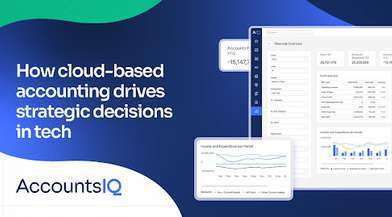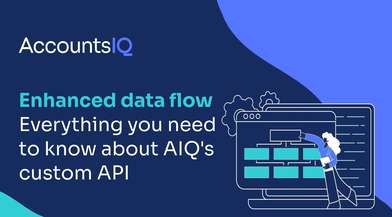
Financial scenario planning is now more vital for businesses than ever. It’s one of the most important tools to help CFOs navigate the extreme uncertainties caused by the pandemic, climate change, Brexit, supply chain disruption and inflation. Analysing different financial scenario plans enables you to spot warning signs, play out multiple outcomes, and prepare for both worst-case and best-case scenarios.
Financial planning scenario analysis isn’t just about big-picture events. The insights you gain into customers, suppliers and your operations can go right to the bottom line. That’s why in a Deloitte study*:
- 96% of respondents said financial scenario planning and analysis will become more important to their organisations in the next three years.
- 49% of respondents said that the greatest benefit of using analytics is that it is a key factor in better decision-making.
*The Analytics Advantage: Deloitte Touche Tohmatsu Limited’s first annual survey on the state of analytics readiness at leading corporations.
The survey also concluded that many companies still don’t use data effectively for decision-making. This is mainly because many organisations have only rudimentary financial scenario planning technology. There’s lots of room for growth in this field and for CFOs to influence its development.
What is financial scenario planning?
According to Gartner, financial scenario planning is:
“A strategic planning tool for improving financial forecasting by evaluating the uncertainties, risks and opportunities of multiple potential future states. The objective of financial scenario planning is to secure the best immediate outcome while also preparing suitable alternative action plans, which finance leaders can enact depending on how a situation unfolds.”
In other words, financial scenario planning can help decision-makers identify a range of potential outcomes and impacts, evaluate responses, and manage resources for both positive and negative possibilities. Visualising potential risks and opportunities enables businesses to be proactive rather than simply reacting to events. It’s a way to assert some control in an uncertain business environment.
Scenarios are ‘what if’ stories
Scenario plans tell a story. The story starts with ‘what if’ but it can have multiple possible endings. For example, your story might start with ‘what if social distancing measures mean that my capacity reduces by x%’ or ‘what if my product goes viral and demand spikes x% overnight?’ The story then unfolds as you explore whether your business is prepared.
ProForecast is a sophisticated financial scenario planning tool which is integrated with AccountsIQ’s financial management software. According to their Chief Commercial Officer, Mark Harrison, some of the most used ‘what if’ scenarios are:
- What if demand increases 20%?
- What if the exchange rate changes?
- What if my supplier costs increase 5%?
- What if sales decrease by 3%?
- What if we increase headcount by 8%?
- What if I introduce a new product?
- What if I increase my debt levels?
Why is financial scenario planning important?
Scenario planning can give you a competitive advantage. You’ll be able to react more quickly and decisively in the midst of a crisis. It also means you’ll have a more robust framework for making non-emergency, but still critical, operational decisions.
The difficulties of financial scenario planning and how technology can help
Scenario planning can be a lengthy process. It’s also important to remember that to be useful, scenario planning analysis must be a living process. External and internal conditions can change quickly, and your assumptions and plans will need constant monitoring and updating.
Successful and meaningful financial scenario planning analysis starts with having the right data. This goes well beyond the day-to-day accounting data from your general ledger. For example, you’ll also need historical sales data, competitor data, costs by product or service, and growth projections.
No matter how good you are at using Excel, it’s going to take a lot of time and effort to produce meaningful detailed business forecast modelling. Most finance teams simply don’t have the bandwidth and resources to dedicate several days a month to building scenario planning models in Excel.
As Mark Harrison of ProForecast explains:
“It’s not uncommon for small to medium sized multi-entity organisations to go from spending two days a week forecasting in Excel, to around just two hours a month when they switch to ProForecast.
“What’s more, when using ProForecast with your AccountsIQ platform, you can be confident you’re always using the same single source of real-time data on your group company, to set your budgets or targets. You can then refresh this data with actuals as often as you want.”
Here are 5 more benefits of using Cloud-based accounting and forecasting software rather than Excel:
- It’s easy and safe to share sensitive information
- You can quickly compare your forecasts with reality and drill down into the detail to spot problems or opportunities
- You can give individual users edit rights to ensure a robust audit trail
- You can extract the data to create meaningful and visual management reports
- You can make updates and adjustments to all your reports and charts quickly and easily with just a few clicks.
There’s no doubt that undertaking financial scenario planning analysis involves commitment from CFOs and other senior stakeholders. Many companies collect unprecedented quantities of data - from their operations and supply chains, but also customer interactions. Now, there are opportunities to effectively analyse that data to provide real-time insights for competitive advantage.
Finally, remember your financial scenario planning journey can be as (or more) valuable than your final reports. You’ll be bringing your leadership team together to share knowledge and consider all the scenarios that could affect your business. That, in itself, could help you head off potential risks or make the most of new opportunities.
Find out more about financial scenario planning and analysis in our webinar
James Taylor, our Pre-Sales Consultant, demonstrates how AccountsIQ integrates with ProForecast, a Cloud Forecasting & Strategic Planning tool for the Mid-Market. He’ll show you why you no longer need to spend countless hours manipulating data in Excel.
Our Forecasting & Scenario Planning webinar covers three key areas:
- 3-way forecasting (P&L, cashflow, balance sheet)
- How to do scenario planning
- How the ProForecast integration with AccountsIQ works.
Watch the recording of our AccountsIQ Forecasting & Scenario Planning webinar.
Find out more about AccountsIQ’s integration with ProForecast.



